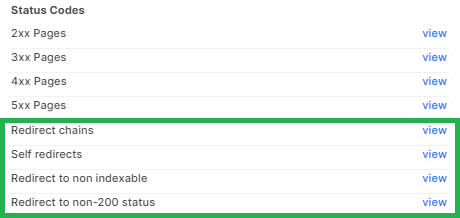
How to fix redirect errors in Google Search Console
Analyzing the data of the “Page indexing” report in Google Search Console, you may come across the “Redirect error” issue as one of the reasons why pages are not being indexed. This article aims to elucidate the causes of such problems, provide guidance on analyzing them, and offer solutions for rectifying redirect-related issues.
Understanding the “Redirect error” report
First and foremost, it is crucial to comprehend the issues that lead to pages being flagged in the “Redirect error” report. A redirect refers to the process of directing a client’s browser from one URL to another. The term “client browser” pertains to any browser utilized by a user agent, which could be either a search engine bot or a human user. Both temporary redirects (302 or 307) and permanent redirects (301 or 308) are employed for this purpose. The optimal redirect setup involves an old URL being seamlessly redirected to a new URL with relevant information. Ultimately, the final page’s return should yield a 200 status code.
Example:
https://example.com/jetoctopus-crawler-2022 – 301 – https://example.com/jetoctopus-crawler-2023 – 200 OK
However, during the configuration of redirects, errors might emerge that impede the proper functioning of these redirects, causing the client browser to fail in loading the intended page (redirect location page). Such instances are captured in the “Redirect error” report within Google Search Console.
Common causes of redirect errors
Redirect сhains
Redirect chains occur when a user is directed through multiple successive pages. For instance:
https://example.com/jetoctopus-crawler-2020 – 301 – https://example.com/jetoctopus-crawler-2021 – 301 – https://example.com/jetoctopus-crawler-2022 – 301 – https://example.com/jetoctopus-crawler-2023 – 200 OK
The number of such hops can be very large. And if the number of redirects in the chain is more than 5, search bots may not follow to the end. And if there are 10 redirects, then Google will definitely not process all redirects. Accordingly, bots will not receive the content of the page. User browsers can attempt to traverse the chain, but if there are too many redirects, the user will receive an “ERR_TOO_MANY_REDIRECTS” error and will not be able to access the page’s content.
Redirect loops
Another scenario leading to pages being flagged under “Redirect error” is redirect loops. This transpires when a page, in an attempt to redirect to another page, is itself redirected to the original page. For instance:
https://example.com/jetoctopus-crawler-2020 – 301 – https://example.com/jetoctopus-crawler-2021 – 301 – https://example.com/jetoctopus-crawler-2020
In cases of redirect loops, neither users nor bots can access the page’s content. This error category also encompasses self-redirects, which involve a page redirecting to itself inadvertently:
https://example.com/jetoctopus-crawler-2020 – 301 – https://example.com/jetoctopus-crawler-2020 – 301 – https://example.com/jetoctopus-crawler-2020
Errors in redirects
Beyond the aforementioned errors, instances arise where pages redirect to 404 pages or other non-existent pages. Incorrect specifications of the HTTP protocol or domain can also contribute to redirect errors.
Importance of addressing “Redirect Error”
Rectifying “Redirect error” issues is pivotal since both Google’s indexing processes and user experiences hinge on seamless redirects. Failure to address these problems can result in inaccessible content for both search engines and users.
Steps to resolve “Redirect error”
Before proceeding to rectify the “Redirect error,” a thorough understanding of its underlying causes is imperative. In cases where numerous pages are affected, manual inspection becomes infeasible. Therefore, leveraging tools like JetOctopus is recommended.
Step 1. Access Google Search Console, navigate to the “Pages” > “Page indexing” > “Redirect error” report.

Step 2. Export all the URLs listed in the report.

Step 3. Move lisr to JetOctopus and initiate a crawl. Opt for the “URL List” mode, and paste the exported URLs in the “List” field. Start the crawl process.

Step 4. After the crawl is finished, access the crawl results and explore the “Technical” – “Statuses” report.

Here, assess the “All Status Codes Breakdown” chart to identify the types of redirects in use (permanent or temporary).

Step 5. Investigate the built-in data tables such as “Redirect chains,” “Self redirects,” and “Redirect to non-indexable” to pinpoint the problematic links.

Step 6. The most valuable insights lie within the raw data. Navigate to the “Pages” data table and configure desired data columns by clicking the “Setup columns” button.
Add pertinent columns clicking “Setup columns”:
- Redirect To URL
- Redirect Type
- Redirect Chain
- Redirect Chain Length
- Redirect Target Status Code
- Redirect Target Is Indexable
Apply the column setup.

- In the received datatable, filter the “Crawl Pages: Redirect Chain” column to identify pages with excessive redirects in their chains. Rectify these redirects by streamlining them, ideally directing from page A to page C and page B to page C. Pages with 10 or more redirects in the chain demand immediate attention to resolve the redirect error.
- Analyze the “Redirect Target Status Code.” Ideally, this should display a 200 status code; any deviation indicates a redirect-related glitch.
After addressing the redirect errors, return to Google Search Console and click the “Validate fix” button to confirm the rectification.

In conclusion, rectifying “Redirect error” issues is paramount for optimizing indexing and user experiences on your website. By understanding the types of redirect errors, employing tools like JetOctopus for comprehensive analysis, and addressing problematic redirects systematically, you can ensure the seamless functioning of your website’s redirects. This not only positively impacts search engine rankings but also enhances user satisfaction by providing uninterrupted access to your content.

